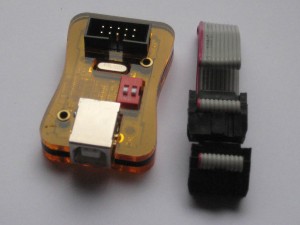I have been documenting interesting software and programming related findings in my own private Wiki for a few years now. This turned out to be really useful in many cases, especially on topics that I would run into only very infrequently. Most of these notes would not be of any interest to anybody else but me, while a few of them might be worth offering to a wider audience. All it would take would be some nice presentation and a little effort to write things down in whole sentences. Or so I thought.
When I began tinkering with electronics again, I soon decided this would be a great excuse to start my own blog, sharing my progress. After my initial enthusiasm had worn off, I soon realized that I had somewhat underestimated this project. It takes a good deal of time and effort to write things down in whole sentences and to present them nicely. As a result, there are a few projects that I finished this year that I failed to put up here so far. Most likely, I have forgotten a lot of interesting details by now. But I’ll try and summarize what I do remember.
Anyway, after the successful completion of the XA1541 I was ready to try something a little more challenging. And while the LPT adapter worked just fine, I wanted to see if I could get a XU1541 adapter to work. The XU1541 is basically the USB version of the XA1541. It was developed by Till Harbaum who has lost interest in the project by now. Luckily, Spiro Trikaliotis agreed to maintain the documentation on his own pages.
The really simple design is probably what I like best in the XU1541. It doesn’t even need a dedicated USB driver IC, the USB protocol is implemented in software and handled by the AVR microcontroller.The microcontroller itself is actually the next best thing I like abpit the XU1541, I always wanted to get into that topic. To flash the firmware onto the controller, I first needed a programmer. I quickly settled for a cheap in-system programmer (ISP) that was available on the Amazon market place. Similar products are available on eBay, too. To order the actual components, I use the pre-assembled shopping cart at Reichelt.
When everything had been delivered, I first set up the entire circuit on a small breadboard. To that end, I improvised adapters for the USB, DIN, and ISP connectors. The rest turned out to be quite easy and flashing the firmware with avrdude went smoothly, too.
Next, I needed to layout the circuit board. The circuit is not overly complex, so using a standard stripboard seemed to be the easiest way to go. I also had a left-over, empty casing lying around and made sure that the board would fit in there nicely.
When everything was done, I used the both the XU1541 and the XA1541 adapter to connect two 1541 drives to my PC. The current development version of OpenCBM then allowed me to read two floppy disks simultaneously.



















